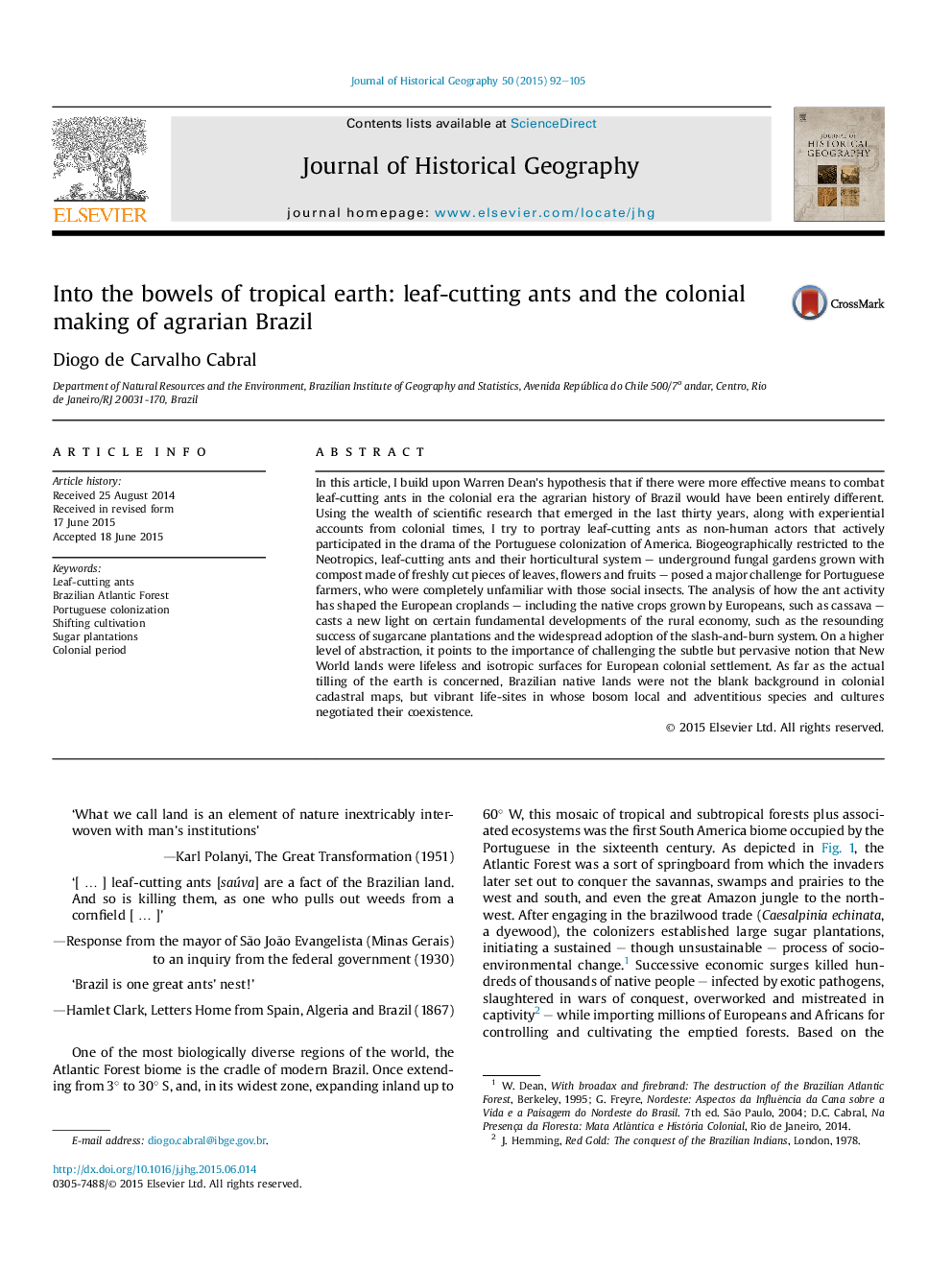| Article ID | Journal | Published Year | Pages | File Type |
|---|---|---|---|---|
| 7447542 | Journal of Historical Geography | 2015 | 14 Pages |
Abstract
In this article, I build upon Warren Dean's hypothesis that if there were more effective means to combat leaf-cutting ants in the colonial era the agrarian history of Brazil would have been entirely different. Using the wealth of scientific research that emerged in the last thirty years, along with experiential accounts from colonial times, I try to portray leaf-cutting ants as non-human actors that actively participated in the drama of the Portuguese colonization of America. Biogeographically restricted to the Neotropics, leaf-cutting ants and their horticultural system - underground fungal gardens grown with compost made of freshly cut pieces of leaves, flowers and fruits - posed a major challenge for Portuguese farmers, who were completely unfamiliar with those social insects. The analysis of how the ant activity has shaped the European croplands - including the native crops grown by Europeans, such as cassava - casts a new light on certain fundamental developments of the rural economy, such as the resounding success of sugarcane plantations and the widespread adoption of the slash-and-burn system. On a higher level of abstraction, it points to the importance of challenging the subtle but pervasive notion that New World lands were lifeless and isotropic surfaces for European colonial settlement. As far as the actual tilling of the earth is concerned, Brazilian native lands were not the blank background in colonial cadastral maps, but vibrant life-sites in whose bosom local and adventitious species and cultures negotiated their coexistence.
Related Topics
Social Sciences and Humanities
Arts and Humanities
History
Authors
Diogo de Carvalho Cabral,
